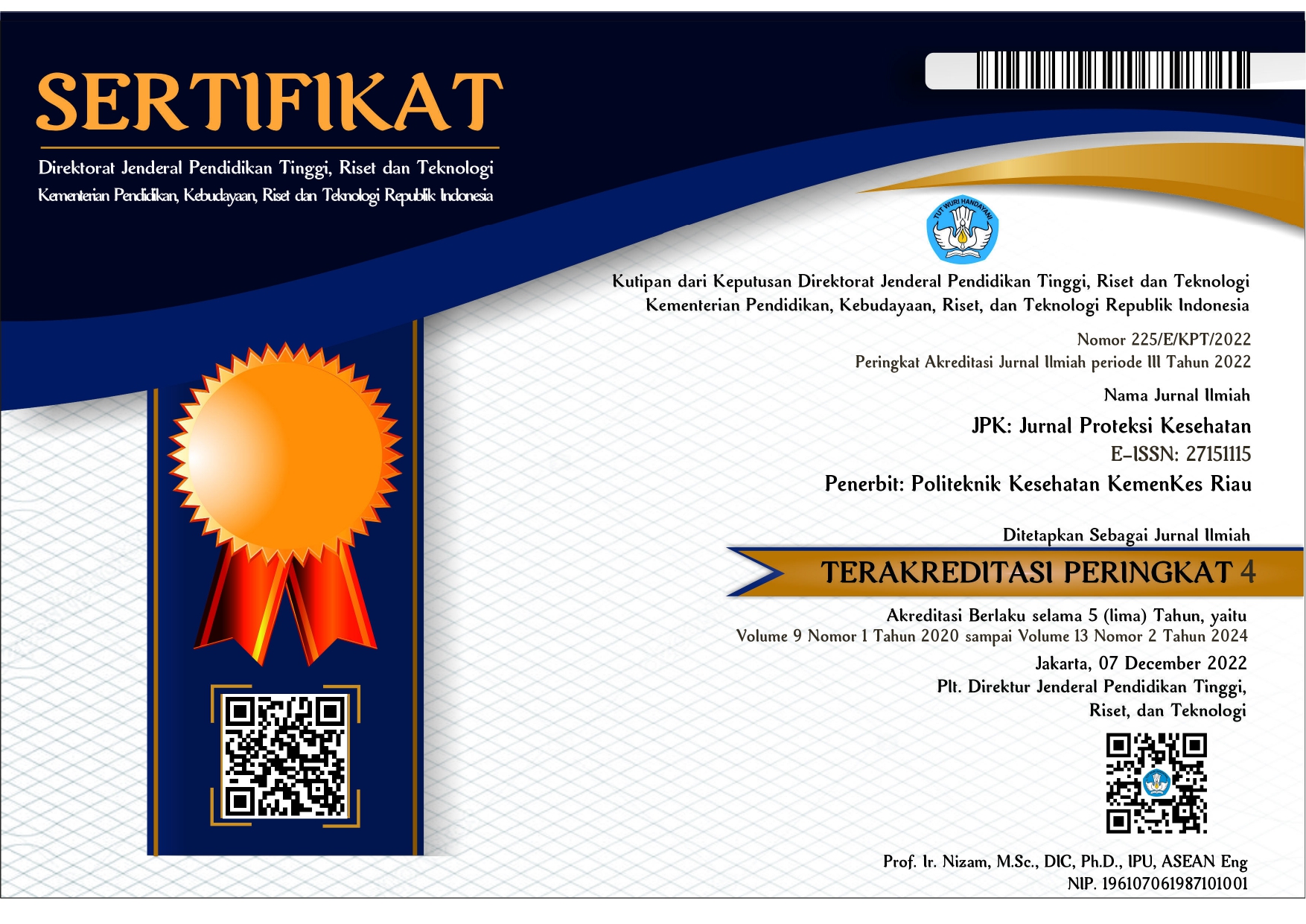Collaborating the Role of Stakeholders in Waste Management
Abstract
The main problem of waste management on small islands is that the amount of waste often exceeds the capacity that the island can handle, due to the limited availability of land, volume of land, budget, and human resources. Unmanaged waste generation has an ecological impact such as environmental pollution, loss of natural resources; economic impacts such as decreased productivity; social impacts such as the emergence of conflict, and health impacts uch as increasing the number of environmental-based diseases on the community and the wider environment. The stakeholder role collaboration strategy is needed. This study aims to formulate a collaborative strategy for the role of stakeholders in the proper management of Penyengat Island, Tanjungpinang City. This research method is qualitative. Waste management on the island of Penyengat demands the role of the government, the private sector, and the community. The government moves in terms of regulations, facilities, and implementers. The role of the private sector is more to provide funds and empowerment. While the role of the community is more on empowering efforts to reduce waste and its utilization.
References
[2] P. Agamuthu, K. M. Khidzir, and F. S. Hamid, “Drivers of sustainable waste management in Asia,” Waste Manag. Res., vol. 27, no. 7, pp. 625–633, 2009, doi: 10.1177/0734242X09103191.
[3] A. Hiramatsu, Y. Hara, M. Sekiyama, R. Honda, and C. Chiemchaisri, “Municipal solid waste flow and waste generation characteristics in an urban-rural fringe area in Thailand,” Waste Manag. Res., vol. 27, no. 10, pp. 951–960, 2009, doi: 10.1177/0734242X09103819.
[4] C. Bogiatzidis and D. Komilis, “Economic and life cycle analysis of municipal solid waste management for small Islands: On-site management scenarios versus off-site transportation,” Glob. Nest J., 2016.
[5] S. K. Mallak, M. B. Ishak, M. R. M. Kasim, and M. A. A. Samah, “Assessing the effectiveness of waste minimization methods in solid waste reduction at the source by manufacturing firms in Malaysia,” Polish J. Environ. Stud., vol. 24, no. 5, pp. 2063–2071, 2015, doi: 10.15244/pjoes/35518.
[6] T. A. Otitoju and L. Seng, “Municipal Solid Waste Management: Household Waste Segregation in Kuching South City, Sarawak, Malaysia,” Am. J. Eng. Res., vol. 03, no. 06, pp. 82–91, 2014, [Online]. Available: www.ajer.org.
[7] T. A. Otitoju, “Individual Attitude toward Recycling of Municipal Solid Waste in Lagos, Nigeria,” Am. J. Eng. Res., vol. 3, no. 07, pp. 78–88, 2014, [Online]. Available: www.ajer.org.
[8] L. Willmott and S. Graci, “Solid Waste Management in Small Island Destinations: A Case Study of Gili Trawangan, Indonesia,” Téoros Rev. Rech. en Tour., pp. 71–76, 2012, doi: 10.7202/1036566ar.
[9] E. Shamshiry, B. Nadi, M. Bin Mokhtar, I. Komoo, H. Saadiah Hashim, and N. Yahaya, “Integrated Models for Solid Waste Management in Tourism Regions: Langkawi Island, Malaysia,” J. Environ. Public Health, vol. 2011, pp. 1–5, 2011, doi: 10.1155/2011/709549.
[10] F. Contreras, S. Ishii, T. Aramaki, K. Hanaki, and S. Connors, “Drivers in current and future municipal solid waste management systems: Cases in Yokohama and Boston,” Waste Manag. Res., vol. 28, no. 1, pp. 76–93, 2010, doi: 10.1177/0734242X09349417.
[11] T. Usui, M. Chikasada, and K. Kakamu, “Does garbage pricing increase the immoral disposal of household waste?,” Appl. Econ., vol. 49, no. 38, pp. 3829–3840, 2017, doi: 10.1080/00036846.2016.1270414.
[12] N. Serge Kubanza and M. D. Simatele, “Sustainable solid waste management in developing countries: a study of institutional strengthening for solid waste management in Johannesburg, South Africa,” J. Environ. Plan. Manag., vol. 0, no. 0, pp. 1–14, 2019, doi: 10.1080/09640568.2019.1576510.
[13] R. E. Marshall and K. Farahbakhsh, “Systems approaches to integrated solid waste management in developing countries,” Waste Manag., vol. 33, no. 4, pp. 988–1003, 2013, doi: 10.1016/j.wasman.2012.12.023.
[14] H. Keleher, C. MacDougall, and B. Murphy, Understanding health promotion. Australia: Oxford University Press, 2007.
[15] A. K. Jha, S. K. Singh, G. P. Singh, and P. K. Gupta, “Sustainable municipal solid waste management in low income group of cities: A review,” Trop. Ecol., vol. 52, no. 1, pp. 123–121, 2011.
[16] Z. Ikhwan, R. H. Harahap, L. Andayani, and M. Mulya, “Partnership As An Effort To Consolidate Waste Management Initiatives In Tourism Destinations On Small Islands: The Case Of Penyengat Island,” in ICESSD 2019, October 22-23, Jakarta, Indonesia, 2019, pp. 1–10, doi: 10.4108/eai.22-10-2019.2291486.
[17] M. I. Al-Wabel, W. S. Al Yehya, A. S. AL-Farraj, and S. E. El-Maghraby, “Characteristics of landfill leachates and bio-solids of municipal solid waste (MSW) in Riyadh City, Saudi Arabia,” J. Saudi Soc. Agric. Sci., vol. 10, no. 2, pp. 65–70, 2011, doi: 10.1016/j.jssas.2011.03.009.
[18] M. Fathi, Zangane, Hamed, “Municipal Solid Waste Characterization and It Is Assessment for Potential Compost Production: A Case Study in Zanjan City, Iran,” Am. J. Agric. For., vol. 2, no. 2, p. 39, 2014, doi: 10.11648/j.ajaf.20140202.14.
[19] H. S. Moghadam and R. J. Stern, “Ophiolites of Iran: Keys to understanding the tectonic evolution of SW Asia: (II) Mesozoic ophiolites,” J. Asian Earth Sci., vol. 100, pp. 31–59, 2015, doi: 10.1016/j.jseaes.2014.12.016.
[20] A. B. Alfons and T. Padmi, “Multi-Criteria Analysis for Selecting Solid Waste Management Concept Case Study: Rural Areas in Sentani Lake Region, Jayapura,” Indones. J. Urban Environ. Technol., vol. 2, no. 1, p. 88, 2019, doi: 10.25105/urbanenvirotech.v2i1.3557.
[21] P. J. Deschenes and M. Chertow, “An island approach to industrial ecology: Towards sustainability in the island context,” J. Environ. Plan. Manag., vol. 47, no. 2, pp. 201–217, Mar. 2004, doi: 10.1080/0964056042000209102.
[22] Zainul Ikhwan, R. Hamdani Harahap, Lita Sri Andayani, and Miswar Budi Mulya, “Model of the Importance of Socio-Cultural in Waste Management on Penyengat Island,” Lakhomi J. Sci. J. Cult., vol. 2, no. 4, pp. 142–147, 2021, doi: 10.33258/lakhomi.v2i4.532.
[23] N. Indrianti, “Community-based Solid Waste Bank Model for Sustainable Education,” Procedia - Soc. Behav. Sci., vol. 224, no. August 2015, pp. 158–166, 2016, doi: 10.1016/j.sbspro.2016.05.431.
[24] N. H. Senawi and L. Sheau-Ting, “Attributes to facilitate e-waste recycling behaviour,” MATEC Web Conf., vol. 66, no. 2016, pp. 4–8, 2016, doi: 10.1051/matecconf/20166600058.
[25] J. Anschütz, J. IJgosse, and A. Scheinberg, Putting Integrated Sustainable Waste Management into Practice. 2004.
[26] T. Okayama, J. P. Susanto, Indriyati, and Kardono, “Social capacity of waste and material management of Jakarta,” WIT Trans. Ecol. Environ., 2010, doi: 10.2495/WM100111.
[27] Kementerian PU, Tata Cara Penyelenggaraan Sistem Pengelolaan Sampah di Kawasan Pulau Kecil. 2016.












